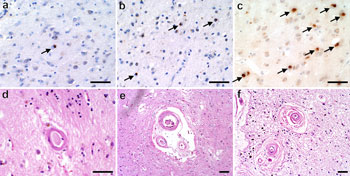
Shih-Hsiu “Jerry” Wang, MD, has written a proposal titled “Novel pathogenic mechanisms linking age-related TDP-43 pathology, cerebrovascular pathology, and Alzheimer’s disease in the aging brain” that has been selected to receive $75,000 in funding per year for two years as a Duke/UNC Alzheimer’s Disease Research Center (ADRC) Developmental Project.
The goal of the developmental project program is to stimulate and support innovative, high potential lines of research related to the ADRC’s theme: to identify age-related changes across the lifespan that contribute to the development, progression, or experience of AD. Wang’s research focus is on limbic-predominant TDP-43 encephalopathy (LATE), an understudied brain pathology characterized by TDP-43 protein aggregates in the limbic system (amygdala, entorhinal cortex, and hippocampus).
Wang’s research, (Limbic-predominant age-related TDP-43 encephalopathy neuropathological change (LATE-NC) is independently associated with dementia and strongly associated with arteriolosclerosis in the oldest-old | SpringerLink) has shown that LATE is very common in the elderly (approximately 30%) and strongly associated with arteriolosclerosis and hippocampal sclerosis. Although LATE often co-exists with Alzheimer’s disease (AD), a significant proportion of patients with LATE (approximately 1/3) do not have significant AD pathology. Moreover, LATE contributes significantly to dementia, independent of other co-existing brain pathologies. With this award, Wang plans to take a deep dive into the pathogenic mechanisms linking LATE, arteriolosclerosis, and AD.

Limbic predominant TDP-43 encephalopathy (LATE) is characterized by perinuclear cytoplasmic inclusions (arrows in a-c). LATE is strongly associated with brain arteriolosclerosis. Representative images of mild (d), moderate (e), and severe (f) arteriolosclerosis